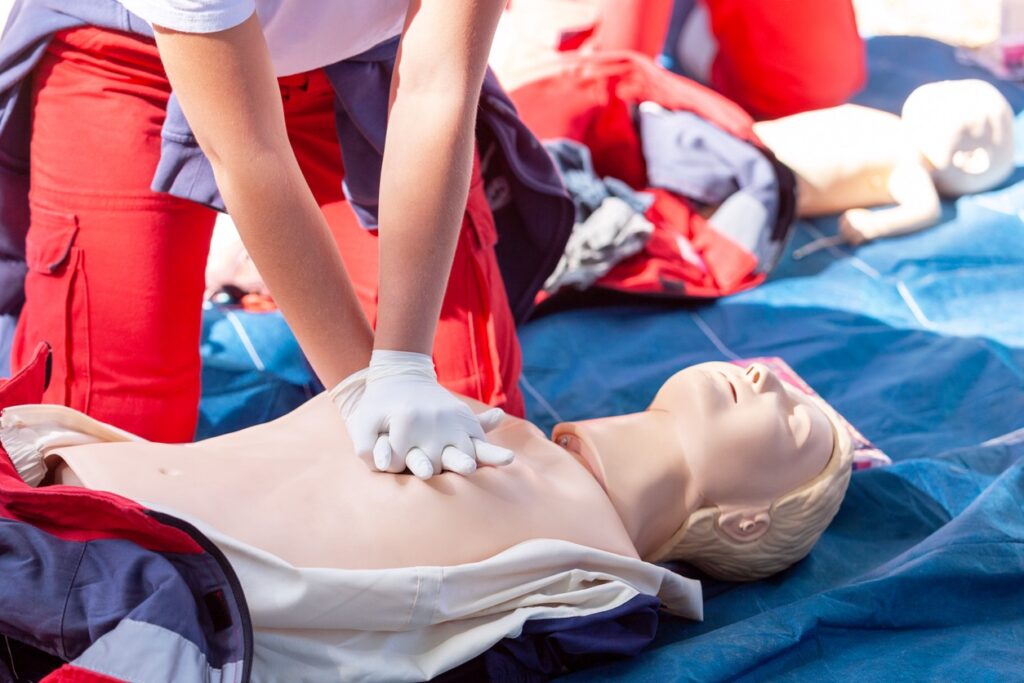Comprehensive CPR and First Aid Courses in Edmonton
Comprehensive CPR and first aid courses equip individuals with essential life-saving skills to handle emergencies confidently. These courses cover critical techniques like CPR, wound care, and AED usage, preparing you for situations such as cardiac arrest or injuries. Whether for personal safety, workplace compliance, or community readiness, professional training secures you’re prepared to act effectively in critical moments. By investing in proper education, you can make a meaningful difference when every second counts.
Table of Contents
- Core Skills You’ll Master in a Comprehensive First Aid Course
- Why Professional Training Outperforms Self-Learning
- Tips for Selecting the Best CPR and First Aid Course in Edmonton
- Final Thoughts: The Lifelong Value of Emergency Preparedness
Imagine this: You’re at a community event when someone suddenly collapses, unconscious and unresponsive. Would you know what to do? Emergencies like cardiac arrest or severe injuries can happen anywhere, and being prepared can mean the difference between life and death. That’s where comprehensive CPR and first aid training comes in – it equips you with the skills to act quickly and confidently in critical moments.
In Edmonton, professional courses are designed to teach life-saving techniques that anyone can learn, regardless of their background. From administering CPR to handling injuries or allergic reactions, these programs cover a wide range of scenarios. Enrolling in proper first aid course not only builds your confidence but also secures you’re ready to protect your loved ones, coworkers, or even strangers when it matters most.
Core Skills You’ll Master in a Comprehensive First Aid Course
When you enroll in a first aid course, the goal isn’t just to check a box – it’s to gain practical, life-saving skills that prepare you for real-world emergencies. These courses are designed to equip you with techniques that are both easy to learn and highly effective in critical situations. Here’s what you’ll walk away with:
1. Life-Saving Techniques: CPR and AED Usage
Cardiac arrest can happen anywhere, and immediate action is crucial. In a comprehensive course, you’ll learn:
- CPR for All Ages: Proper hand placement, compression depth, and rescue breaths tailored to adults, children, and infants.
- AED Operation: How to use an automated external defibrillator safely and effectively to restore normal heart rhythm.
These skills are taught through hands-on practice, securing you’re confident when every second counts.
2. Responding to Common Medical Emergencies
Not all emergencies involve cardiac arrest. You’ll also learn how to handle situations like:
- Choking (using the Heimlich maneuver for adults and children).
- Severe allergic reactions (recognizing symptoms and administering epinephrine auto-injectors).
- Asthma attacks or diabetic emergencies (identifying warning signs and providing initial care).
This foundational knowledge helps you stay calm and act decisively.
3. Treating Injuries and Trauma
Accidents happen, and knowing how to respond can prevent minor injuries from becoming major issues. Skills include:
- Controlling bleeding with direct pressure or tourniquets.
- Stabilizing fractures or sprains until professional help arrives.
- Managing burns, cuts, or scrapes to reduce infection risk.
Courses often use realistic scenarios to simulate these situations, reinforcing your ability to think on your feet.
4. Confidence Through Hands-On Practice
Reading about first aid isn’t enough – practice makes perfect. Professional training programs emphasize hands-on drills and simulations. This approach secures you leave the course not just informed but truly prepared to act under pressure.
By mastering these core skills, you’ll be equipped to handle a wide range of emergencies with confidence. Whether at home, work, or in public spaces, this knowledge empowers you to make a meaningful difference when it matters most.
Why Professional Training Outperforms Self-Learning
When it comes to learning life-saving skills, the quality of your training matters. While online tutorials and self-teaching might seem convenient, they often fall short in preparing you for real-life emergencies. Professional training programs offer distinct advantages that ensure you’re truly ready to act when it counts. Here’s a breakdown of why professional courses outshine self-learning:
| Factor | Professional Training | Self-Learning |
| Hands-On Practice | Guided simulations with real-time feedback from certified instructors. | Limited to theoretical knowledge; no hands-on drills. |
| Certification | Accredited certification recognized by employers and organizations. | No formal recognition or credibility. |
| Skill Retention | Reinforced through interactive exercises and repetition. | High risk of forgetting steps without practice. |
| Emergency Preparedness | Teaches how to stay calm and act decisively under pressure. | Lacks stress-testing in realistic scenarios. |
| Access to Equipment | Provides access to mannequins, AED trainers, and first aid kits. | Relies on personal resources, which may be inadequate. |
While self-learning might save time upfront, it often leaves gaps in knowledge and practical ability. In contrast, professional training provides the tools, experience, and confidence needed to respond effectively in critical moments.
Tips for Selecting the Best CPR and First Aid Course in Edmonton
Choosing the right CPR and first aid course is crucial to make sure you receive high-quality training that meets your needs. With so many options available, it’s important to evaluate factors that contribute to a valuable learning experience. Here are some tips to help you make an informed decision:
Tip 1. Look for Accredited Providers
Not all courses are created equal. Make sure the provider is accredited by a recognized organization, such as the Red Cross, St. John Ambulance, or Workplace Safety organizations. Accreditation guarantees that the course adheres to industry standards and that your certification will be widely accepted.
Tip 2. Check Course Content and Duration
- Content: Review the syllabus to confirm it covers essential skills like CPR, AED usage, and first aid for common emergencies (e.g., choking, bleeding control).
- Duration: Avoid overly short courses that may skip hands-on practice. A comprehensive program typically lasts 4–8 hours, allowing time for both theory and practical drills.
Tip 3. Prioritize Hands-On Training
The best courses emphasize interactive, hands-on learning. Look for programs that include mannequins for CPR practice, AED trainers, and simulated emergency scenarios. This approach secures you’re not just memorizing steps but truly mastering them.
Tip 4. Consider Class Size and Instructor Expertise
Smaller class sizes allow for personalized attention and feedback from instructors. Additionally, verify that instructors are certified and experienced in emergency response – they should be able to answer questions confidently and provide real-world insights.
Tip 5. Evaluate Location and Scheduling Convenience
Choose a course location that’s easy to access, whether in-person or online with virtual options. Also, check if the schedule aligns with your availability. Many providers in Edmonton offer flexible timings, including weekends and evenings, to accommodate busy lifestyles.
Tip 6. Assess Certification Validity and Recognition
Make sure the certification you earn is valid for at least two years (the standard duration for most CPR and first aid certifications). Additionally, confirm that it’s recognized by employers, schools, or regulatory bodies if needed.
By taking these factors into account, you can select a CPR and first aid course that meets your requirements and equips you with the confidence and skills to handle emergencies effectively. Investing time in finding the right program secures you’re prepared to act when it matters most.
Final Thoughts: The Lifelong Value of Emergency Preparedness
Being trained in CPR and first aid is more than just a skill – it’s a commitment to safety, both for yourself and those around you. These life-saving techniques empower you to act confidently in emergencies, turning moments of uncertainty into opportunities to make a difference. Whether at home, work, or in the community, the ability to respond effectively can have a lasting impact.
Investing in professional training ensures you’re equipped with the most up-to-date knowledge and hands-on practice, giving you peace of mind in critical situations. By choosing a comprehensive course, you not only gain valuable skills but also contribute to building safer, more prepared communities.
Emergencies are unpredictable, but your readiness doesn’t have to be. With the right training, you can step forward as a confident responder when it matters most.

